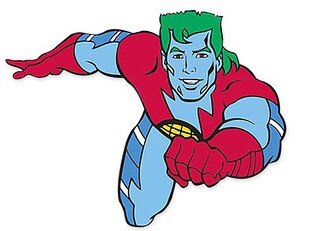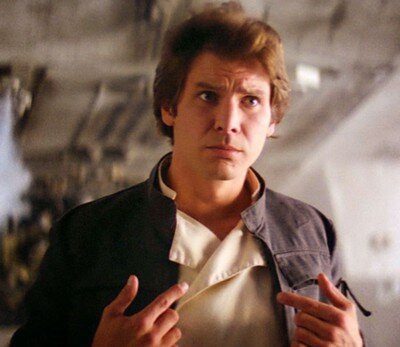Select a category
Great Power
When you empower people to do great things and hold them accountable for the great things they do, including successes and failures, everyone wins.

Jesus Christ said it. Theodore Roosevelt said it. Stan Lee said it:
When you empower people to do great things and hold them accountable for the great things they do, including successes and failures, everyone wins.
As designers, when we’re given the power (authority) we need (from our clients, bosses, teams, etc.) to affect real change and make UX and other design choices based on available data and our expertise, we’re able to create more usable interfaces and better user experiences. The user wins. The client wins. The company wins. We win.
The catch here though is to wield that power responsibly. When you’re given keys to borrow a car, it’s implied you’ll drive it safely and return it in the same condition. You could, however, drive it like you stole it, wreck it, abuse it, defile it, return it w/ the tank empty, etc. The expectation is though that the owner gets the car back like it was before. However in business, and life really, when given power, trust, authority, freedom, the expectation is that you’ll not just provide a 1:1 ROI, but that you’ll take what you’ve been given and give back something more because, well, that’s your laison d’etre. That’s why you exist—to improve things. Imagine how generous people would become if, whenever something was borrowed, it was returned in better shape? Maybe you washed the car. Maybe you repaired that rattling muffler. Maybe you vacuumed the rugs, or put new tires on it as a thank-you.
Whatever your job, but for me, especially as a designer, it’s paramount that we never add up to the sum of our parts, but that we constantly improve upon that which we’ve been trusted, and make things a little better, nicer, more usable, more friendly, more trusted, more efficient, more profitable wherever we go, whatever we touch.
But how?
Language is a funny thing. Sometimes interesting insights are gleaned from inverting and transposing words. For example — Ask not what your country can do for you, but what you can do for your country…When you doubt your powers, you give power to your doubts.…etc. Therefore let’s try:
With great responsibility comes great power.
As we are empowered to do great things, to overcome obstacles, and accomplish new feats, we become imbued with the power necessary to do those very things.
Whether you think you can, or you think you can’t—you’re right.
— Henry Ford
Call it the placebo effect. Call it karma. Call it empowerment. The point is, when you have been given stewardship over a thing, regardless of what lead up to this point, you’ve now been qualified to accomplish the proper handling of that thing. Notice that I didn’t say you ARE qualified because that’s something else. You have simply BEEN qualified, by some powers-that-be, to accomplish a task. And whether you think you can do it or can’t, you’re probably right.
As the new year looms on the horizon, I challenge you to take stock in the powers afforded you. Have you wielded them responsibly this year? Did the entity that entrusted you with these gifts see a fruitful ROI? How will you improve upon your performance next year?
“The power is YOURS!”
—Captain Planet
Flight of the Buffalo
If you’re the leader and your minions aren’t performing up to snuff, or business isn’t going the way you want/expect — you need to introspect your query into the cause because it’s probably you.
Appa — the flying bison. This is an awesome still from one of the worst movies of all time. Unfortunate, because it’s one of the best animated series of all time.
There is a fantastic book called The Flight of The Buffalo. It’s one of those “managing people” books, and the title is actually very apt once you learn the metaphor. Buy it and read it. You’ll be glad you did.
Anyway…One of the major premises of the book that I loved was this: When something isn’t going the way you want, always begin your inquiry into the problem with:
“What is it that I am doing wrong?”
The idea is this: If you’re the leader and your minions aren’t performing up to snuff, or business isn’t going the way you want/expect — you need to introspect your query into the cause because it’s probably you. If Johnson didn’t land that account that was in the bag, it’s probably because either a) YOU didn’t train/inspire/counsel/trust, etc. her/him well enough or b) YOU shouldn’t have hired her/him in the first place. Nearly every problem a leader sees in their team is due to a lack or failure in themselves. Good leaders know this. Great leaders do something about it.
So what has this got to do with design?
“Who me!?” — Han Solo
Most, if not all, of us, have sat across the table/monitor while we’ve watched users click the wrong link, choose the wrong option, go down the wrong path, stare blindly at the screen, lost, confused, bored, angry or apathetic. I myself have felt the desire to perform a remote Jedi choke when the user I was watching said something so obtuse and moronic I could’ve died. Then, when my pride had stopped choking me, I was able to sit back and ask myself “What is it that I am doing wrong?” And that’s the key. As UX/UI designers we are Tron — we “…fight for the users.” Notice the ‘for’ — it’s really important. We aren’t CLU or the MCP who fight against the user. So when the user isn’t successful, it is often us that have failed them and we need to ask ourselves what we’re doing wrong.
Introspection Brings Insight
I find that this kind of introspection to be incredibly insightful. It sheds light on end-user issues, biases, misinterpretations, misunderstandings, incorrect assumptions, process holes, bad data, poor design, bad choices, bad marketing, poor user experience, bad business practices, flawed methodologies, skewed perceptions, prejudices, pride, stupidity, apathy, and simple mistakes. <breathes> But what I find most amazing about approaching an issue from this tack is this: When I am the problem, I am also the solution. I can change me. I can change my processes. I can improve this or that. I can modify this, that, or the other thing. When you can follow the problem all the way back to yourself you’re equipped and able to begin setting things in motion to affect (and effect!) change for the greater good — and not just in your designs, but in your entire organization.
So the next time something goes awry with that thing/person that upsets you all the time, take some time and ask yourself: “What is it that I am doing wrong?” and you may find some new epiphanies that lead you down a more enlightened path — where buffaloes take wing.
Seriously, read the book. Then you’ll totally get it.



